Nandi people and their Culture in Kenya
Who are the Nandi People in Kenya? The Nandi are an ethnic community found in East Africa. They inhabit mainly Kenya, parts of Uganda and Eastern Zaire. In Kenya, the Nandi live in the highland areas of the Nandi Hillsin Rift Valley Province who speak the Nandi languages. They are a sub-group of the Kalenjin people.
The Nandi live in Nandi County, Uasin-Gishu County, Trans-Nzoia County, Nakuru County and parts of Narok County.
Before British colonization, they were sedentary cattle-herders, sometimes also practising agriculture.
Their settlements were more or less evenly distributed rather than being grouped into villages. Like other Nilotic peoples, they were noted warriors.
They traditionally practice circumcision of both sexes, although female circumcision is fast fading as a rite of initiation into adulthood.
Boys' circumcision festivals took place about every seven and a half years, and boys circumcised at the same time are considered to belong to the same age set; like other Nilotic groups, these age sets (called ibinda, pl. ibinweek) were given names from a limited fixed cycle.
Each age set is further subdivided into a subset (siritieet, pl. siritoiik). About four years after this festival, the previous generation officially handed over defense of the country to the newly circumcised youths.Girls' circumcision, excising the clitoris, took place in preparation for marriage.
Religion
They traditionally worshiped a supreme deity, Asis (literally "Sun"), as well as venerating the spirits of ancestors. Their land is divided into six "counties" (emet): Wareng in the north, Mosop in the east, Soiin/Pelkut in the south, Aldai and Chesumei in the west, and Em-gwen in the center.
The Orkoiyot, or medicine man, was traditionally acknowledged as an overall leader. The Orgoiyot led not only in spiritual matters but also during wars, as evidenced during the war between the British colonials building the railway and the Nandi warriors.
The leader at that time was Koitalel Arap Samoei who was killed by Richard Meinertzhagen, a British soldier. In pre-colonial times, they also enjoyed a fearsome reputation as fighters; Arab slave-traders and ivory-traders took care to avoid the area, and the few that dared attempt to traverse it were killed.
Social organization
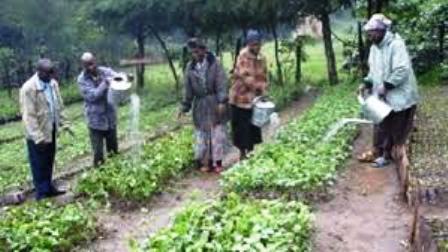 The Nandi People of Kenya Cultivating Crops in Nandiland
The Nandi People of Kenya Cultivating Crops in NandilandThe Nandi have had a well structured 'political' system revolving around what might be referred to at the Nandi Bororiet. No other Kalenjin community organised themselves in the Bororiet (pl. bororiosiek) system. The Nandi political life was ordered around 'bororiet' which is distinctly different from oreet (clan) but is probably an expanded form of the advanced order of the 'kokwet' or village system.
As explained earlier, people of the same oreet were not necessarily restricted to one bororiet. However, some families were advised, perhaps to avoid recurrent catastrophes, not to live in certain bororiet.
A case in point is the long-standing banning of Kap Matelong (and all Kipkenda?) from inhabiting Chesumei which is populated by the relatively obscure but conservative borioriosiek of Cheptol, Kapno and Tibingot.
The Nandi bororiet may be taken as a 'primitive' (not intended to offend, but purely for lack of a better word) model of multipartyism. For it was largely around one's bororiet that vexing, bethrotals and circumcission ceremony attendance were based.
It might sound alien to the reader that competition among bororiosiek was more intense than among oratinwek. It would seem, therefore, that with the advent of Christianity and the consequential thinking that what was traditional was backward, the disappearance of bororiet became inevitable.
The recent resurgence of Nandi nationalism has brought to the fore the social tenets and socio-cultural-political organisational strata. Among these are the realisation that the current level of complacency, laziness and pedestrian attitude to life that is prevalent among the youth has been inspired by a lack of cementing social identities like the bororiet system.
Was bororiet, then, a form of a political system? Hence, could we safely albeit without provoking a sense of unjustified pride, say that the bororiosiek were actually a system akin to the modern day multi-party system?
People could and still change bororiet, due to migration, without necessarily changing their oreet.
This is where I consider bororiet as a form of a political party. For example, if one's family lived in one bororiet but was haunted by repetitive deaths that pointed to a curse, a ceremony reminiscent of 'Kap Kiyai' was performed to allow the family to change their bororiet by 'crossing a river' in the context of 'ma yaitoos miat aino' which literally means that death does not cross a river (body of water).
This elaborate ceremony was called 'raret' (rar means trim or cut off). If you find a family with a name Kirorei then you probably have a family case of bororiet change which came about as a result of 'rareet' (chopping off).
People changed bororiet as a result of migration to another koreet, emeet (region). This seems common for some bororiosiek and not others, however. For example an individual who moved to Kabooch could retain the unique identity, leading perhaps derogatively, to the reference of skin rashes that develop on kids heads as 'Kaboochek'.
This was understood to mean that the rashes did not infect and blanket the whole head but developed in isolated but closely related colonies! The Matelong family, originally of KapSile, changed their bororiet because of a calamity which has been discussed elsewhere in this blog.
Another instance of change of bororiet is a shameful perhaps spiteful defection 'martaet' which means somebody deserts his bororiet for another. This brings to mind names such as Kimarta. Within each Bororiet were siritoik or sub-bororiet.
Society and culture
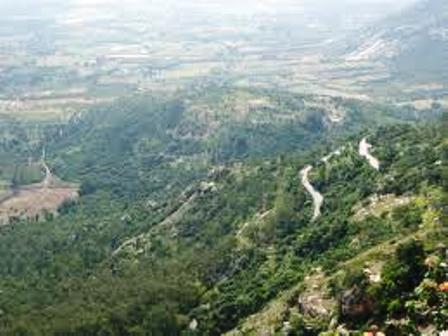 The Nandi Hills of Nandi People in Kenya
The Nandi Hills of Nandi People in KenyaFemale-female marriages within the Nandi culture have been reported,] although it is unclear if they are still practiced, and only about three percent of Nandi marriages are female-female. Female-female marriages are a socially-approved way for a woman to take over the social and economic roles of a husband and father.
They were allowed only in cases where a woman either had no children of her own, had daughters only (one of them could be "retained" at home) or her daughter(s) had married off.
The system was practiced "to keep the fire"—in other words, to sustain the family lineage, or patriline, and was a way to work around the problem of infertility or a lack of male heirs.
A woman who married another woman for this purpose had to undergo an "inversion" ceremony to "change" into a man. This biological woman, now socially male, became a "husband" to a younger female and a "father" to the younger woman's children, and had to provide a bride price to her wife's family.
She was expected to renounce her female duties (such as housework), and take on the obligations of a husband; additionally, she was allowed the social privileges accorded to men, such as attending the private male circumcision ceremonies.
No sexual relations were permitted between the female husband and her new wife (nor between the female husband and her old husband); rather, the female husband chose a male consort for the new wife so she will be able to bear children.
The wife's children considered the female husband to be their father, not the biological father, because she (or "he") was the socially designated father.
Issues and Problems Facing the Nandi
The main issues/problems concerning population and development in the district include the following are: - Integration of population issues into development planning. The issue here is weak integration of population concerns into development planning due to inadequate finances to facilitate the integration process, insufficient facilities and equipment for the District Planning Unit and training of personnel involved in the integration process.
· Population and environment. The effects of population and environment in the district include over exploitation of the environment i.e. cutting down of trees without re-planting etc, environmental pollution through agricultural and industrial activities and poor soil conservation activities
· Children and youth. Inadequate provision of basic needs to the children, poor parenting and guidance of children, inadequate information given to the youth on their physiological changes, risks that accompany early sexual
· The elderly: The elderly are faced with problems that include inadequate family support and care, lack of special programmes and institutions for the elderly
· Persons with Disabilities: Problems facing people with disabilities are Discriminations by members of the family and community and lack of special institutions to cater for their needs.
· Family: Problems facing families in Nandi include irresponsible parenthood, increased domestic violence leading to separation and single parenthood and orphan hood leading to child headed households.
Subsistence and Commercial Activities.
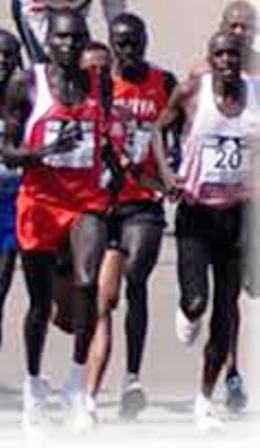 Commercial Activities of the Nandi Runners
Commercial Activities of the Nandi RunnersThe Kalenjin are essentially semipastoralists. Cattle herding is thought to be ancient among them. Although the real economic importance of herding is slight compared to that of cultivation among many Kalenjin groups, they almost all display a cultural emphasis on and an emotional commitment to pastoralism.
Cattle numbers have waxed and waned; however, cattle/people ratios of 5:1 or greater (typical of peoples among whom herding is economically dominant) have been recorded only for the pastoral Pokot.
In their late-nineteenth-century heyday of pastoralism, the Nandi and the Kipsigis approached this ratio; 1-3:1 is more typical of the Kalenjin, and in some communities the ratio is even lower than 1:1.
The staple crop was eleusine, but maize replaced it during the colonial era. Other subsistence crops include beans, pumpkins, cabbages, and other vegetables as well as sweet and European potatoes and small amounts of sorghum.
Sheep, goats, and chickens are kept. Iron hoes were traditionally used to till; today plows pulled by oxen or rented tractors are more common. The importance of cash crops varies with land availability, soil type, and other factors; among the Nandi and the Kipsigis, it is considerable.
Surplus maize, milk, and tea are the major cash crops. Kalenjin farms on the Uasin Gishu plateau also grow wheat and pyrethrum.
In most communities there are a few wage workers and full-time business persons (shopkeepers, tailors, carpenters, bicycle repairmen, tractor owners) with local clienteles. It is common for young married men to be part-time entrepreneurs. Historically, women could brew and sell beer; this became illegal in the early 1980s. Some men work outside their communities, but labor migration is less common than elsewhere in western Kenya.
Industrial Arts.
Traditionally, there were no full-time craft specialists. Most objects were manufactured by their users. The blacksmith's art was passed down in families in particular localities, and some women specialized in pottery.
Trade.
Traditionally, women conducted a trade of small stock for grain between pastoral-emphasis and cultivation-emphasis (often non-Kalenjin) communities. Regular local markets were rare prior to the colonial era. Today large towns and district centers have regular markets, and women occasionally sell vegetables in sublocation centers.
Division of Labor.
There was little traditional division of labor except by age and sex. Men cleared land for cultivation, and there is evidence that married men and women cooperated in the rest of the cultivation process. Husbands and wives did not (except during a limited historical period)—and do not—typically cultivate separately, other than the wife's vegetable garden. Today women do more cultivation if their husbands are engaged in small-scale business activities.
Children herded cattle close to the homestead, as well as sheep and goats; warriors (young initiated men) herded cattle in distant pastures. Women and girls milked, cooked, and supplied water and firewood. Today boys are the main cowherds, and girls are largely responsible for infant care. The children's role in domestic labor is extremely important, even though most children now attend school.
Land Tenure.
In Nandi, individual title to land replaced a system in which land was plentiful, all who lived in a community had the right to cultivate it, and a man could move with his family to any locality in which he had a sponsor.
Land prepared for cultivation, and used regularly, was viewed as belonging to the family that used it, and inherited from mother to son. The tenure systems of other Kalenjin were mainly similar.
The Kerio Valley groups cultivated on ridges and at the foot of ridges, using irrigation furrows that required collective labor to maintain.
This labor was provided by clan segments, which cleared and held land collectively, although cultivation rights in developed fields were held by individual families.
More about Afican Culture
Kenya Cultural Origins |
Kenya Student Rules |
Kikuyu People |
Luo in Kenya |
Masai People |
Samburu People |
Student Class Rules |
Turkana People in Kenya |
Recent Articles
-
Garam Masala Appetizers ,How to Make Garam Masala,Kenya Cuisines
Sep 21, 14 03:38 PM
Garam Masala Appetizers are originally Indian food but of recent, many Kenyans use it. Therefore, on this site, we will guide you on how to make it easily. -
The Details of the Baruuli-Banyara People and their Culture in Uganda
Sep 03, 14 12:32 AM
The Baruuli-Banyala are a people of Central Uganda who generally live near the Nile River-Lake Kyoga basin. -
Guide to Nubi People and their Culture in Kenya and Uganda
Sep 03, 14 12:24 AM
The Nubians consist of seven non-Arab Muslim tribes which originated in the Nubia region, an area between Aswan in southern
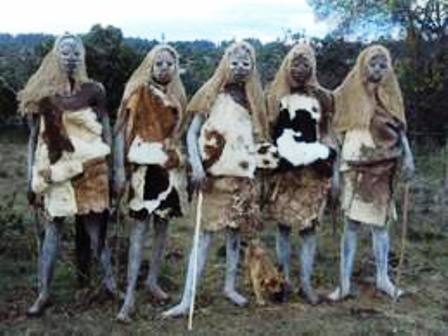
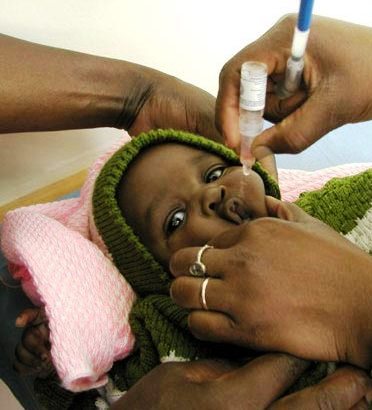
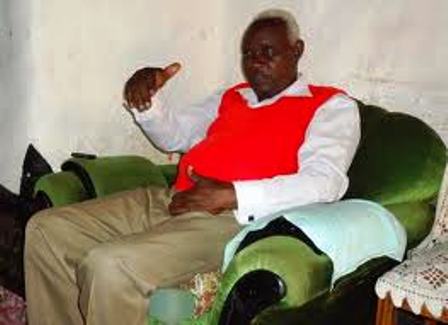







New! Comments
Have your say about what you just read! Leave me a comment in the box below.